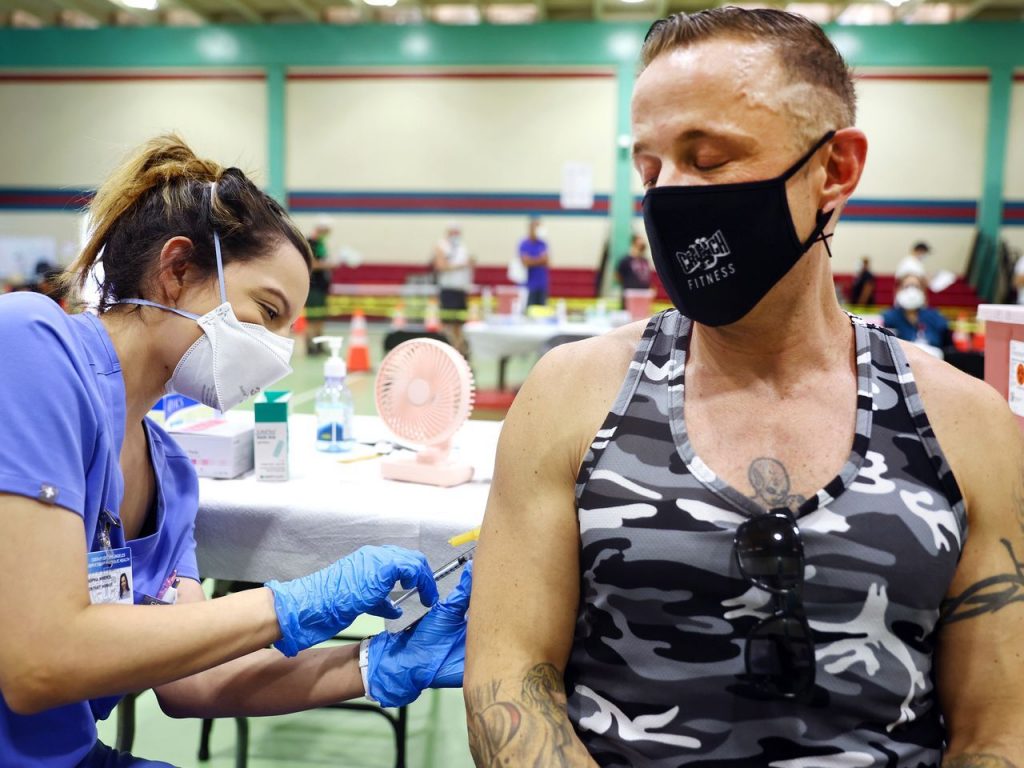Health
With Monkeypox, the US Is Repeating Its Covid Supply-Chain Mistakes
As the Covid-19 pandemic lingers on, the monkeypox outbreak is accelerating in the United States.
About 3,000 cases of monkeypox were reported in the U.S. one month ago, but that number has risen to nearly 14,000 as of Aug. 18. This trend prompted the World Health Organization to declare a global public health emergency on July 23, followed by the Biden administration’s national emergency declaration on Aug. 4.
The U.S. government, particularly the Centers for Disease Control and Prevention and the Food and Drug Administration, have been slammed for their slow response times and bureaucratic tendencies. As three supply chain professors, we agree.
We believe the U.S. government’s biggest failure is its lack of understanding of supply-chain reality.
Consider the dosing schedule for the monkeypox vaccine. The preferred vaccine, Jynneos, is supposed to be administered in two doses separated by 28 days. Because of severe shortages—artificially caused by the FDA itself—many states and cities, including Massachusetts, New York City, and San Francisco, have prioritized first doses, drawing from what they learned from distributing Covid-19 vaccines. Under this “first dose first” strategy, second-dose appointments are not accepted until supply is sufficient, which should be by October. Stretching the time interval between the first and second doses can enable more people to receive partial protection as quickly as possible.
Get Wall Street Journal Print Subscription for $318
Even as state and local public health agencies have worked to expand the reach of monkeypox vaccines, federal officials have consistently spoken in a way that ignores the reality of tight supply constraints. “The clinical trials and immunologic studies of the Jynneos vaccine show that a single dose of the vaccine does not produce the levels of antibody that we would expect are needed for full protection from monkeypox,” said CDC Director Rochelle Walensky. “The two dose regimen is the best that we can do to make sure that we actually have people get the protection that the vaccine is intended to provide,” said Peter Marks, director of the FDA’s Center for Biologics Evaluation and Research. Both the CDC and the FDA have issued statements opposing the practice of prioritizing first doses.
While Walensky and Marks would be correct in a perfect world, they overlooked the fact that, in light of supply shortages, even partial protection is still preferable to no protection at all, as millions of at-risk people are currently experiencing. What’s more, the first-dose-first approach does not prevent people from receiving second doses. The only risk is that the second doses are delayed by a few weeks, a reasonable tradeoff when weighed against the benefit of immunizing more people sooner rather than later. According to a study by Jynneos manufacturer Bavarian Nordic, immune responses brought on by a single dose of the vaccine can last up to two years.
Buy The Economist Digital Subscription Save 70% Off
In light of a dire shortage of monkeypox vaccines, it is encouraging to see some state and local public health agencies taking flexible measures in the best interests of public health.
The CDC and FDA’s stubborn refusal to acknowledge that a flexible vaccine rollout strategy may be required will not help foster public trust in these agencies, which are supposed to take the best actions to protect the general public’s health in times of crisis. In fact, the current monkeypox vaccine rollout is reminiscent of the early phases of the Covid-19 vaccine rollout.
Get The New York Times Subscription 3 Years for $69
During the Covid-19 pandemic, the United States adhered to the two-dose regimen and insisted that anyone who received the Pfizer or Moderna vaccines receive their second dose three or four weeks after their first dose. However, despite their tighter vaccine supply, Canada and the United Kingdom adopted a different strategy by stretching the time interval between the first and second dose to sixteen and twelve weeks, respectively. This stretching strategy has been very effective: Canada and the U.K. expedited their vaccination programs faster than the United States, curbed infections, and reduced hospitalization. Their success was crucially dependent on a national strategy that was implemented nationwide, reducing confusion across regions and ensuring equitable access to vaccines.
Subscribe to Barron’s Digital News 5-Years for $69
So far, the U.S. federal agencies have demonstrated once again their lack of urgency and agency by insisting on the dosing schedule specified on the label. In an unexpected development, instead of stretching the time interval between two 0.5-milliliter doses, the Biden administration asked the FDA to authorize so-called intradermal injection, which would involve injecting a 0.1-milliliter dose into the skin instead of a full 0.5-milliliter dose into the underlying fat. The FDA did so on Aug. 9. But some experts have expressed concerns because the efficacy of this intradermal method with only one-fifth of the full dose is unknown. This method is also complicated for vaccinators, who need to guide a needle into a skin-deep space. It requires additional training, posing challenges to an already overstretched healthcare workforce.
The Biden administration’s proposed solution quickly backfired, drawing strong opposition from Bavarian Nordic, the manufacturer of Jynneos, as the Washington Post reported. Its CEO has apparently threatened to revoke upcoming orders from the U.S., jeopardizing the fight against monkeypox. The “first dose first” approach, in contrast, is supported by solid data and has the support of the manufacturer as well as state and local public health organizations.
Get WSJ Digital Subscription 3 Years Wall Street Journal and Save 70% Off
A more responsible government would have proactively conducted extensive simulation exercises to assess the benefits and drawbacks of each rollout strategy. We, among other researchers, have previously conducted research in the case of Covid-19 vaccination, and we believe that similar exercises should be carried out in the case of monkeypox vaccination.
To be sure, federalism allows state and local public health agencies to act in ways that contradict federal agencies’ recommendations. But a situation in which state and local agencies act in obviously contradictory ways will only erode public trust in federal government agencies. In the event of the next public health crisis, who should the public believe if these agencies render vastly different conclusions?
We urge the CDC, FDA, and the recently elevated Administration for Strategic Preparedness and Response to seriously factor in the ongoing severe shortage when developing a national monkeypox vaccine distribution strategy. Pretending that there are no supply shortages will not make the problem go away.









